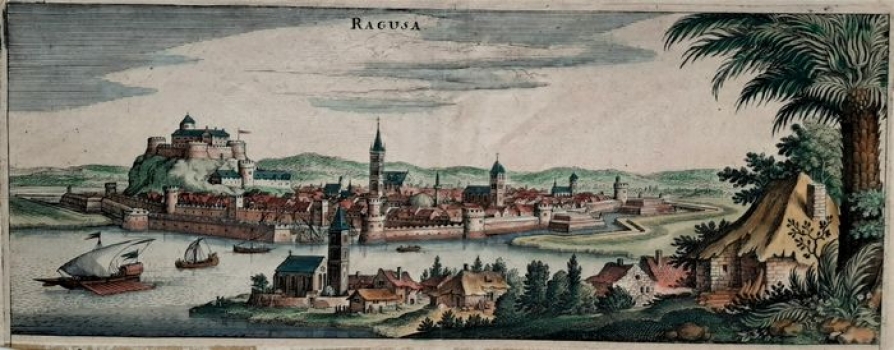RAGUSA (IN SICILY)
This veduta of M. Merian the Younger depicts the town and the immediate vicinity of Ragusa, and it was published in Gottfried's Vermehrte archontologia cosmica, with sheet marked by 569. Ragusa is often identified in the literature with eastern Adriatic Dubrovnik, although the minimal dynamics of orography in the hinterland as well as the appearance of the waters had previously led researchers to doubt it. Namely, this is a depiction of the southern Italian Ragusa on the island of Sicily, with the older part of the town (Ragusa Ibla) and the upper town (Ragusa Superiore). Also recognizable is the Cathedral of St. John the Baptist. The connection between the Adriatic and Ragusa on Sicily existed since the latter had been rebuilt after the great earthquake in 1693 by earthquake refugees, but also by settlers from the Dalmatian town of the same name in the 7th century. Namely, Adriatic Dubrovnik nurtured strong trade ties with the whole of Sicily, and especially Messina. Additional confusion was caused by the fact that Matthaeus Merian (but the elder, the father of the author of the same name of this veduta of the Sicilian Ragusa) made a veduta of the Adriatic Ragusa (Dubrovnik) at the time of the fire of 1667. Apart from the fact that both were destroyed in the catastrophic earthquakes in the 17th century, the two towns are now connected by the fact that both are on the UNESCO World Heritage List and have been declared twin cities since 2000.

